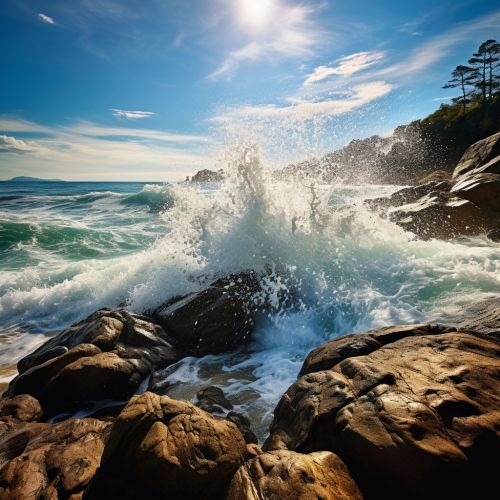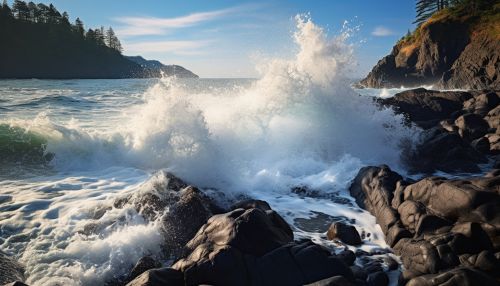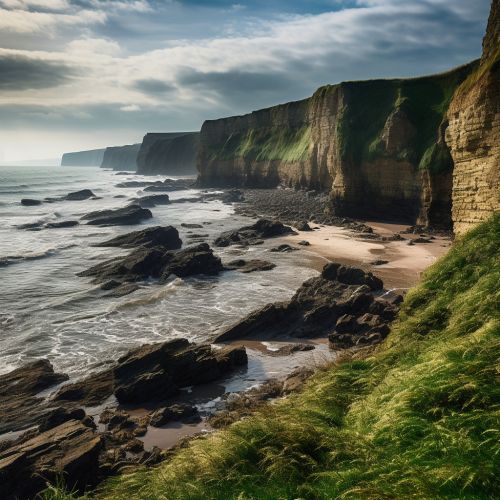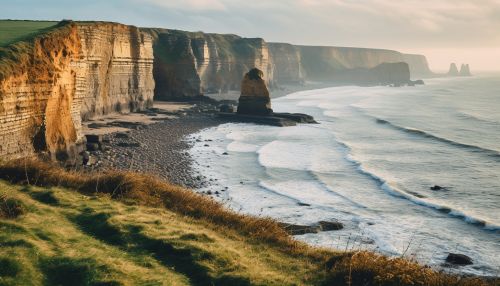The Dynamics of Ocean Surface Waves and Coastal Erosion
Introduction
Ocean surface waves are the undulations that occur on the surface of the ocean as a result of the interaction between the ocean and the atmosphere. These waves are generated by wind, and their dynamics are influenced by a variety of factors, including the wind's speed, duration, and fetch (the distance over which the wind blows). The study of ocean surface waves is a branch of physical oceanography that has important implications for coastal erosion, shipping, offshore industries, and renewable energy.


Formation of Ocean Surface Waves
Ocean surface waves form when the wind blows across the surface of the ocean, transferring some of its energy to the water. This energy causes the water particles to move in circular orbits, creating a wave. The size of the wave depends on the wind's speed, the duration of the wind, and the fetch. Larger waves are generated by stronger winds, longer wind durations, and larger fetches.
Wave Dynamics
The dynamics of ocean surface waves are governed by the principles of fluid dynamics. The wave's motion is described by the wave's amplitude (the maximum displacement of the water surface from its average position), wavelength (the distance between two successive crests or troughs), period (the time it takes for one complete wave to pass a given point), and speed (the rate at which the wave propagates through the water).
The wave's speed, or celerity, is determined by its wavelength and period, according to the wave dispersion relation. For deep-water waves (waves in water depths greater than half their wavelength), the wave speed is proportional to the square root of the wavelength. For shallow-water waves (waves in water depths less than one-twentieth of their wavelength), the wave speed is proportional to the square root of the water depth.
Wave Energy and Power
The energy of an ocean surface wave is proportional to the square of its amplitude and the density of the water. The power, or rate of energy transfer, of a wave is proportional to its energy and its speed. The total wave power in an ocean basin can be calculated by integrating the wave power over the area of the basin.
Wave energy is a form of renewable energy that can be harnessed for power generation. Wave energy converters are devices that convert the kinetic and potential energy of ocean surface waves into electrical energy.
Coastal Erosion
Coastal erosion is the process by which coastal landforms are worn away by the action of waves, currents, and wind. Ocean surface waves play a significant role in coastal erosion, particularly in areas with high wave energy.
When a wave breaks on the shore, it exerts a force on the beach material, causing it to move. This movement of beach material, known as beach drift or longshore drift, can lead to significant changes in the shape of the coastline over time.


Mitigation of Coastal Erosion
There are several strategies for mitigating coastal erosion, including hard engineering solutions such as seawalls, groynes, and breakwaters, and soft engineering solutions such as beach nourishment and dune restoration. These strategies aim to protect the coastline by reducing the impact of waves and currents, stabilizing beach material, and promoting the natural recovery of the coastal environment.
